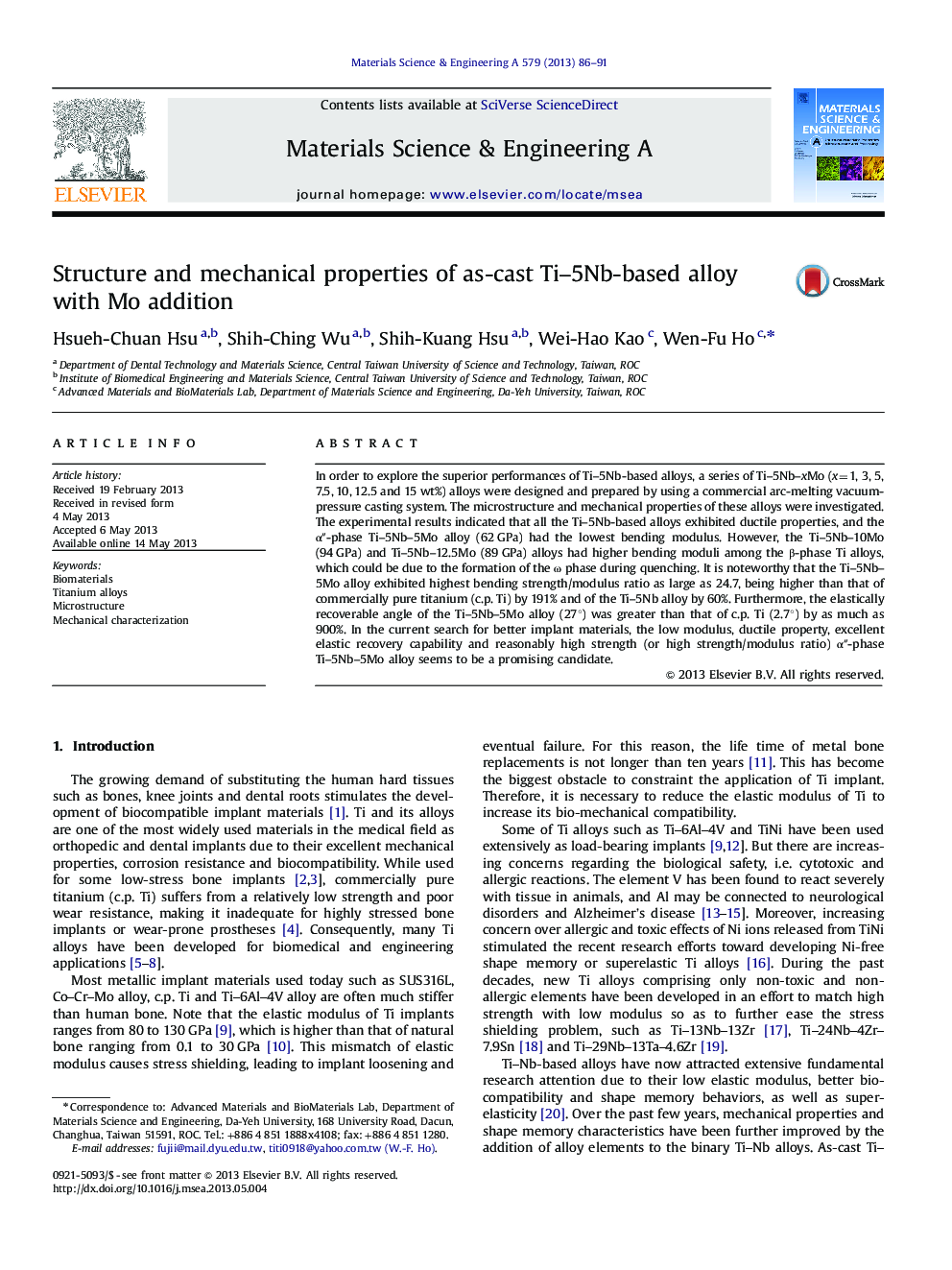| Article ID | Journal | Published Year | Pages | File Type |
|---|---|---|---|---|
| 1576055 | Materials Science and Engineering: A | 2013 | 6 Pages |
In order to explore the superior performances of Ti–5Nb-based alloys, a series of Ti–5Nb–xMo (x=1, 3, 5, 7.5, 10, 12.5 and 15 wt%) alloys were designed and prepared by using a commercial arc-melting vacuum-pressure casting system. The microstructure and mechanical properties of these alloys were investigated. The experimental results indicated that all the Ti–5Nb-based alloys exhibited ductile properties, and the α″-phase Ti–5Nb–5Mo alloy (62 GPa) had the lowest bending modulus. However, the Ti–5Nb–10Mo (94 GPa) and Ti–5Nb–12.5Mo (89 GPa) alloys had higher bending moduli among the β-phase Ti alloys, which could be due to the formation of the ω phase during quenching. It is noteworthy that the Ti–5Nb–5Mo alloy exhibited highest bending strength/modulus ratio as large as 24.7, being higher than that of commercially pure titanium (c.p. Ti) by 191% and of the Ti–5Nb alloy by 60%. Furthermore, the elastically recoverable angle of the Ti–5Nb–5Mo alloy (27°) was greater than that of c.p. Ti (2.7°) by as much as 900%. In the current search for better implant materials, the low modulus, ductile property, excellent elastic recovery capability and reasonably high strength (or high strength/modulus ratio) α″-phase Ti–5Nb–5Mo alloy seems to be a promising candidate.
